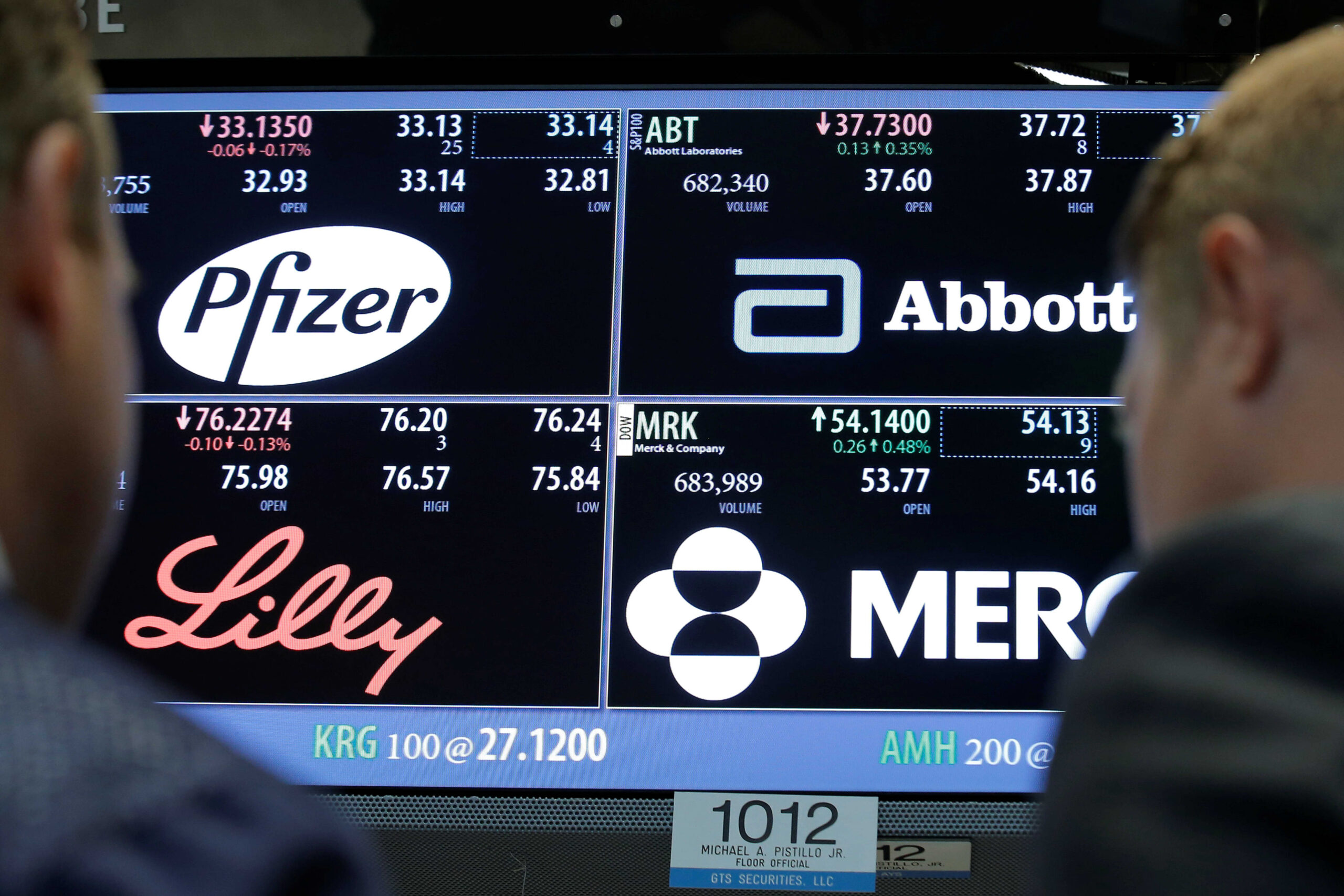
The chatter in my office and on CNBC has been focused on one essential question: What sector is cheap? Not just cheap because the stocks have dramatically underperformed for several years, but attractive because these equities have the potential to outperform the S & P 500 over the next two to three years. My nominee for a group likely to move up the sector rankings is biopharmaceuticals, particularly the large drug and biotech stocks, including Merck , Pfizer , Bristol Myers , Amgen , and Biogen . The two largest names in the sector, Eli Lilly and Novo Nordisk, are excluded because they have skyrocketed thanks to their GLP-1 obesity drugs, which are among the most successful pharmaceuticals in the world. The Novo obesity franchise is expected to generate sales of over $100 Billion in 2025 (JPMorgan estimates), while Lilly, newer to the field, has sales that look skinny at a mere $20 billion forecast in 2025 for Mounjaro and Zepbound. As the table below illustrates, the rest of the gang has been out of favor. Many smart investors, among them, several of my colleagues, cannot warm up to these stocks because of such obvious detractions as the lack of new products, patent expirations, and price controls. Valuations and fundamentals So, what’s there to love? Now that we know why investors don’t like the group, let’s look at why they might be attractive. The table and chart below illustrate some characteristics of the biopharma stocks. To start with, these companies are very profitable. Drug stocks have always been notable for their lofty profit margins, and now is no exception. The average 2024 EBITDA margin, which takes all operating earnings before interest, taxes, and depreciation, is 38%, compared to an average of 31% for the S & P companies. The average net profit margin for this subsector is 24% versus 17.2% for the index, which is among the highest in the economy. Next is valuation. The average price/earnings multiple for the group, using 2025 estimates, is 12.7 times versus 20.6 times for the S & P 500. While a low multiple can be a misleading indicator, we must utilize it along with many other pieces of market data. We also looked at the other valuation ratios, such as total enterprise value, which is market cap plus net debt divided by EBITDA, and those numbers, in the table below, are also attractive. How about fundamentals? A major knock on the biopharma group is the limited productivity from their extremely expensive research efforts, other than obesity drugs, over the past twenty-five years. During the 1990s when I followed the group as an analyst and fund manager, the industry was wildly innovative, with new therapies for cholesterol, oncology, HIV, depression, and, of course, the Viagra boom. What happened? Many experts cite one explanation: All the “easy” or “low-hanging fruit” targets have been addressed, and the big untapped conditions, such as Alzheimer’s, Parkinson’s, ALS, and spinal cord injuries, are too complex. The pipelines of each company on this list are full of compounds aimed at these and other disease states, but the investment community has grown impatient. AI impact? This brings me to the two letters we love associating with winning today: A and I. Can AI be the necessary catalyst for an industry whose well-evolved research tools are not good enough anymore? It takes ten years and billions to bring a compound to market, the exception being Covid-19 vaccines, which were developed at warp-speed, with enormous federal funding. Surprisingly, 90% of drugs entering the first human trials fail, the same as thirty years ago. The technology using AI might not be ready yet, particularly related to the complex biology of the human body. However, given the potential power of data mining and machine learning models, this is not an impossible task. In fact, Pfizer successfully used AI analysis in it’s Covid vaccine development process. PFE YTD mountain Pfizer, year-to-date Success for the biopharma industry is constrained by time, cost, and quality of usable data, which AI can help address. Both scientists and computer engineers have told me that the holy grail is to characterize cellular signal transmissions in known disease states and mine data for helpful interventions. From that point, AI can help design the best molecules to block or stimulate biological activity. Complex programs exist already, such as AlphaFold, which predicts the structure of three-dimensional compounds using data on protein sequences. In terms of human studies, the inability to enroll the appropriate patients accounts for an estimated 86% of clinical trial failures. AI can eventually identify the best patients for studies by analyzing their cellular composition for matches with the intended compound remedies before the trials begin. We know that biopharma names such as Merck, Pfizer, Bristol, Amgen, and Johnson & Johnson have attractive fundamental and valuation metrics. Combined with an option on the benefit of AI in faster and more effective drug development, there is a strong argument that including a basket of these stocks in an equity portfolio is an intelligent move.
EMEA Tribune is not involved in this news article, it is taken from our partners and or from the News Agencies. Copyright and Credit go to the News Agencies, email news@emeatribune.com Follow our WhatsApp verified Channel





